Variations Savoury versions | ||
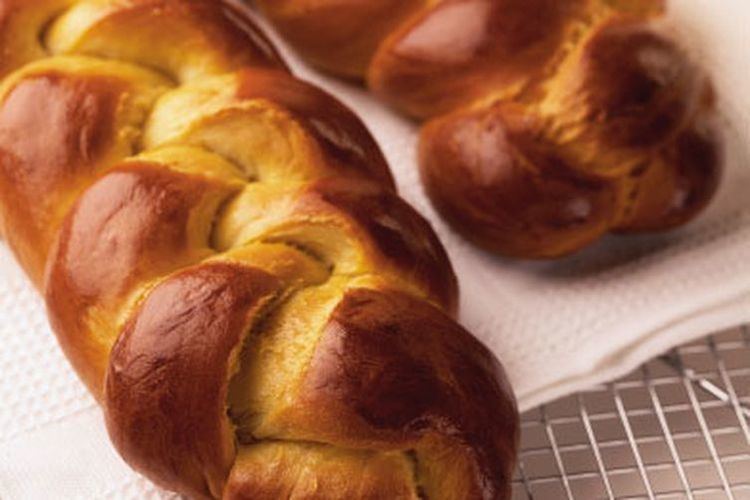 | ||
Similar Pogača, Qurabiya, Börek, Bread, Vasilopita | ||
Tsoureki greek sweet bread akis kitchen
Tsoureki (Greek: τσουρέκι), also known as شوريك (Arabic), panarët (Arbërisht), choreg or "chorek" (Armenian չորեկ), çörək (Azerbaijani), kozunak (Bulgarian козунак), cozonac (Romanian) or çörek (Turkish)), is a sweet, egg-enriched bread, rooted in the cuisines of Europe and Western and Central Asia. It is formed of braided strands of dough. There are also savoury versions.
Contents
- Tsoureki greek sweet bread akis kitchen
- Homemade brioche recipe tsoureki katerina giannakopoulou katerinalitlekitchen recipe 30
- Greek traditions
- Tsoureki Lampropsomo Lamprokouloura Easter Bread
- Christopsomo Christmas Bread
- Tsourekaki Easter Cookie
- Vasilopita New Years Bread
- Armenian traditions
- References
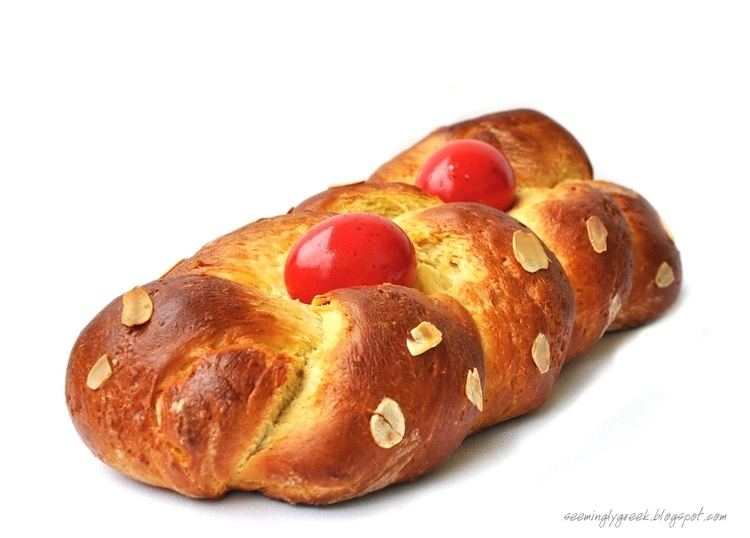
Such rich brioche-like breads are also traditional in many other countries, such as Hungary and the Czech Republic. Examples of similar breads from other cultures are badnji kruh in Croatian cuisine, folar de páscoa in Portuguese cuisine, Brioche in French, kulich in Russian cuisine, panettone in Italian cuisine and challah in Jewish cuisine.
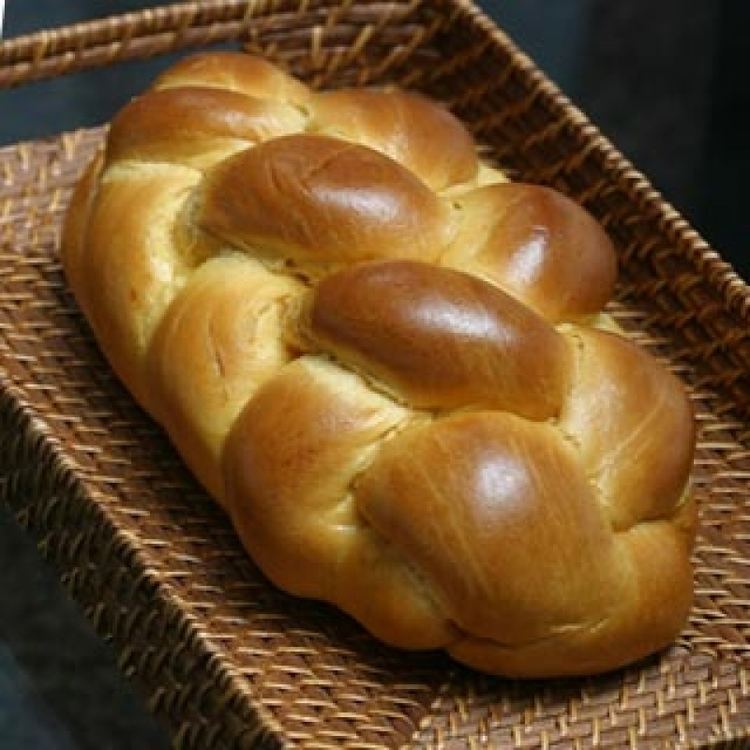
Homemade brioche recipe tsoureki katerina giannakopoulou katerinalitlekitchen recipe 30
Greek traditions
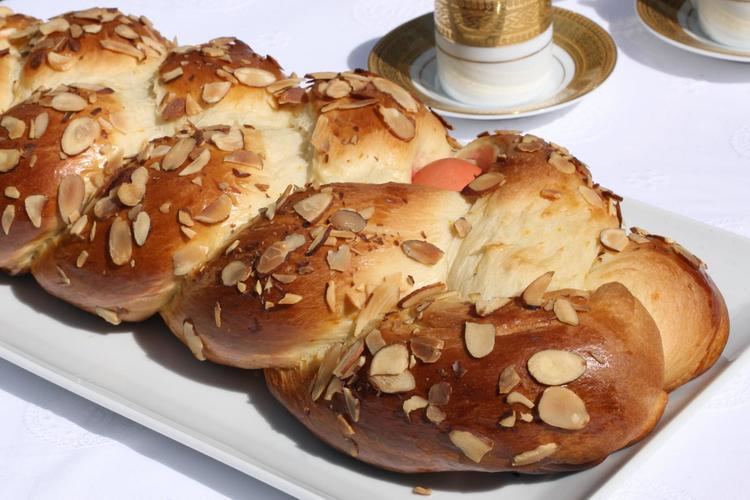
Rich brioche-like breads (often braided) are known by various Greek names that represent three major holidays for Greeks: Easter, Christmas and New Year's. There are many local varieties of these festive breads, based on milk, flour, eggs, sugar, yeast, butter, and a flavoring which can be mahleb, Chian mastic. The butter is added after kneading: the dough is stretched, brushed with melted butter, folded and stretched again repeatedly, until all the butter is incorporated. The result of this technique is that the baked bread separates easily into strands. A good tsoureki should be soft, moist and fluffy, yet stringy and chewy.
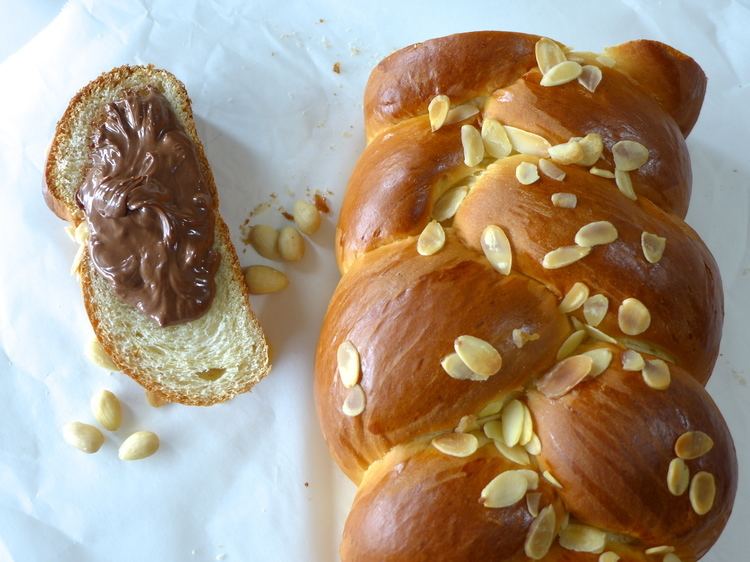
Tsoureki may be eaten at any time of year, often for breakfast, but it is also associated with several holidays.
Tsoureki / Lampropsomo / Lamprokouloura: Easter Bread
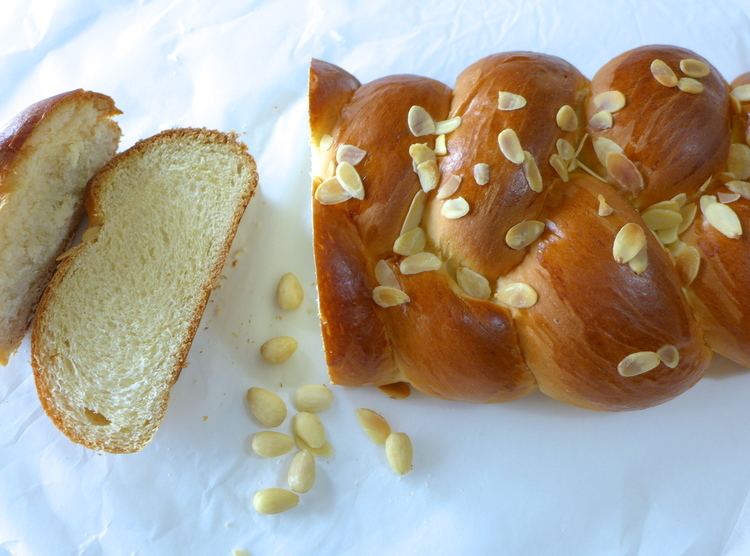
The Greek word lampropsomo (λαμπρόψωμο) is derived from one Greek word for Easter, Λαμπρή, which means "bright light," and ψωμί, which means bread; referring to the light Christians believe is given to them by Christ's resurrection. Another name for the bread is lamprokouloura (Λαμπροκουλούρα): κουλούρα means "round" and, therefore, various forms of cookies and round breads. This braided bread can be shaped either into a circle or into two large braids and sprinkled with nuts, usually slivered, blanched almonds. It is served with red Easter eggs that have been dyed to represent the blood of Christ or red rosebuds.
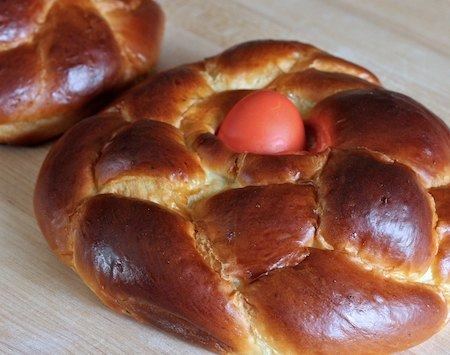
This bread was traditionally prepared with an essence drawn from the seeds of Mediterranean wild cherries, called mahlepi, (Greek: μαχλέπι). The bread can also be flavoured with mastic, the resin from Pistacia lentiscus, var. chia. In more recent years, vanilla-scented tsoureki has also become popular. If going for the full aromatic effect, a fourfold melange of aromatics is used: makhlepi, Chios mastic, and vanilla.
Sometime tsoureki is used as a gift for special occasion, for instance, it can be given as an Easter gift from children to their godparents.
Christopsomo: Christmas Bread
Christopsomo (Χριστόψωμο), which translates as "Christ's bread", is a Greek bread decorated with an early form of the Christian cross with ends that split and curl into circles. Sometimes dough shapes representing initials, birth dates, ages and aspects of the family's life and profession are added. Christopsomo is a rich, round loaf scented with wine soaked figs, anise and orange. It sometimes contains such ingredients as nuts, raisins, cinnamon, nutmeg, cloves and mastic, a dried pine resin. The bread is sometimes served with honey on Christmas Eve. Families leave pieces of bread on the table believing that Christ will come and eat them during the night.
The preparation of Christopsomo is considered a sacred tradition in Greek Orthodox homes, and the care with which it is made is said to ensure the well-being of the home in the year to come. In earlier times, Greek cooks baked large quantities of bread to last for ten to fifteen days, so baking just one or two loaves of Christopsomo the night before Christmas had special significance. The cook would begin by crossing him/herself before starting baking.
Tsourekaki: Easter Cookie
Tsourekaki (Τσουρεκάκι): A variant which consists of biscuits in the shape of the original tsoureki. It is common to add orange flavour.
Vasilopita: New Year's Bread
The traditional New Year's Cake, Vasilopita (Βασιλόπιτα) is sometimes a tsoureki.
Armenian traditions
In Armenian tradition, a big batch of chureg ("chorek" in Eastern Armenian) is baked for Easter, with one of the choregs containing a coin for good luck to whomever gets it.
